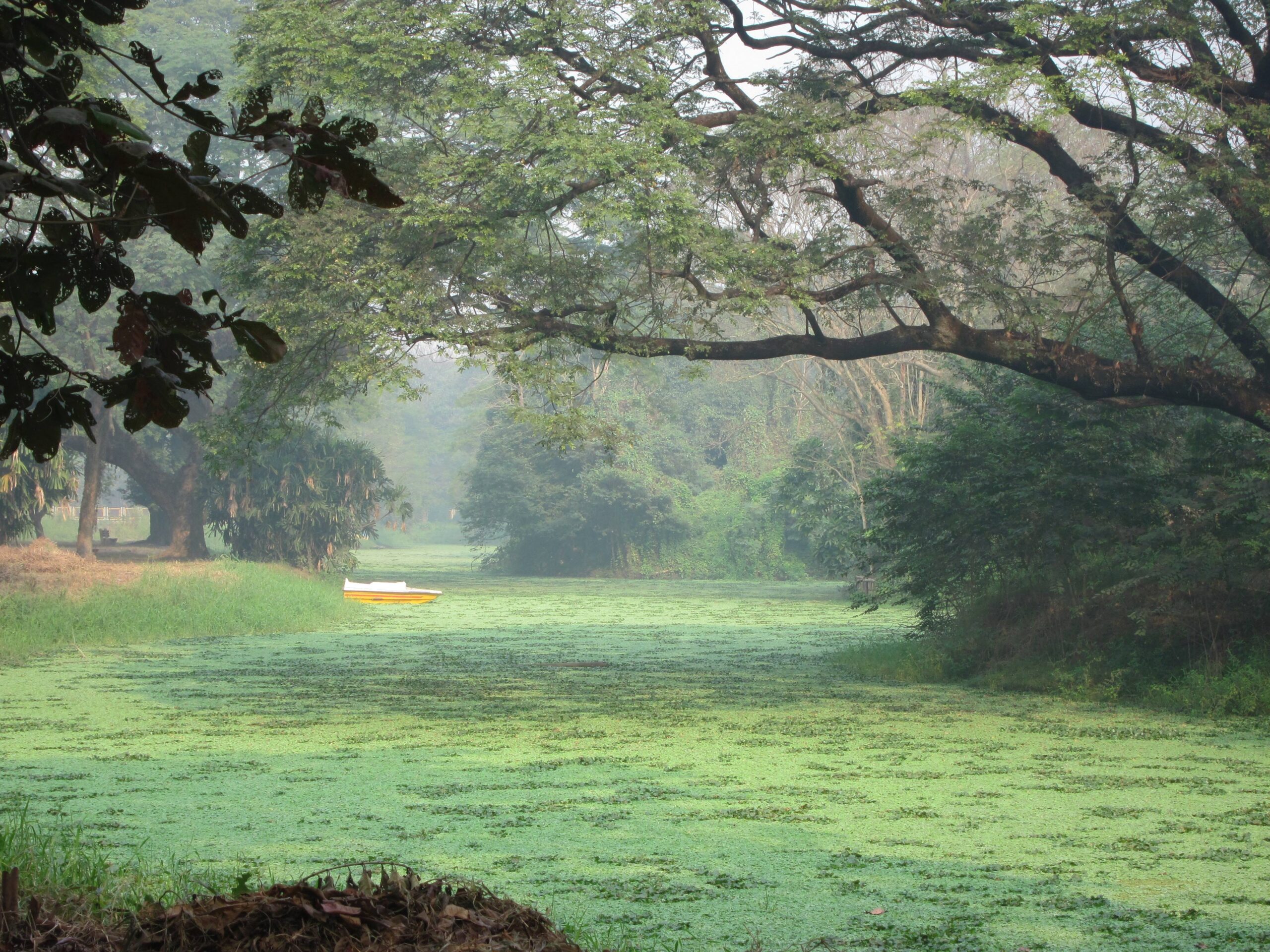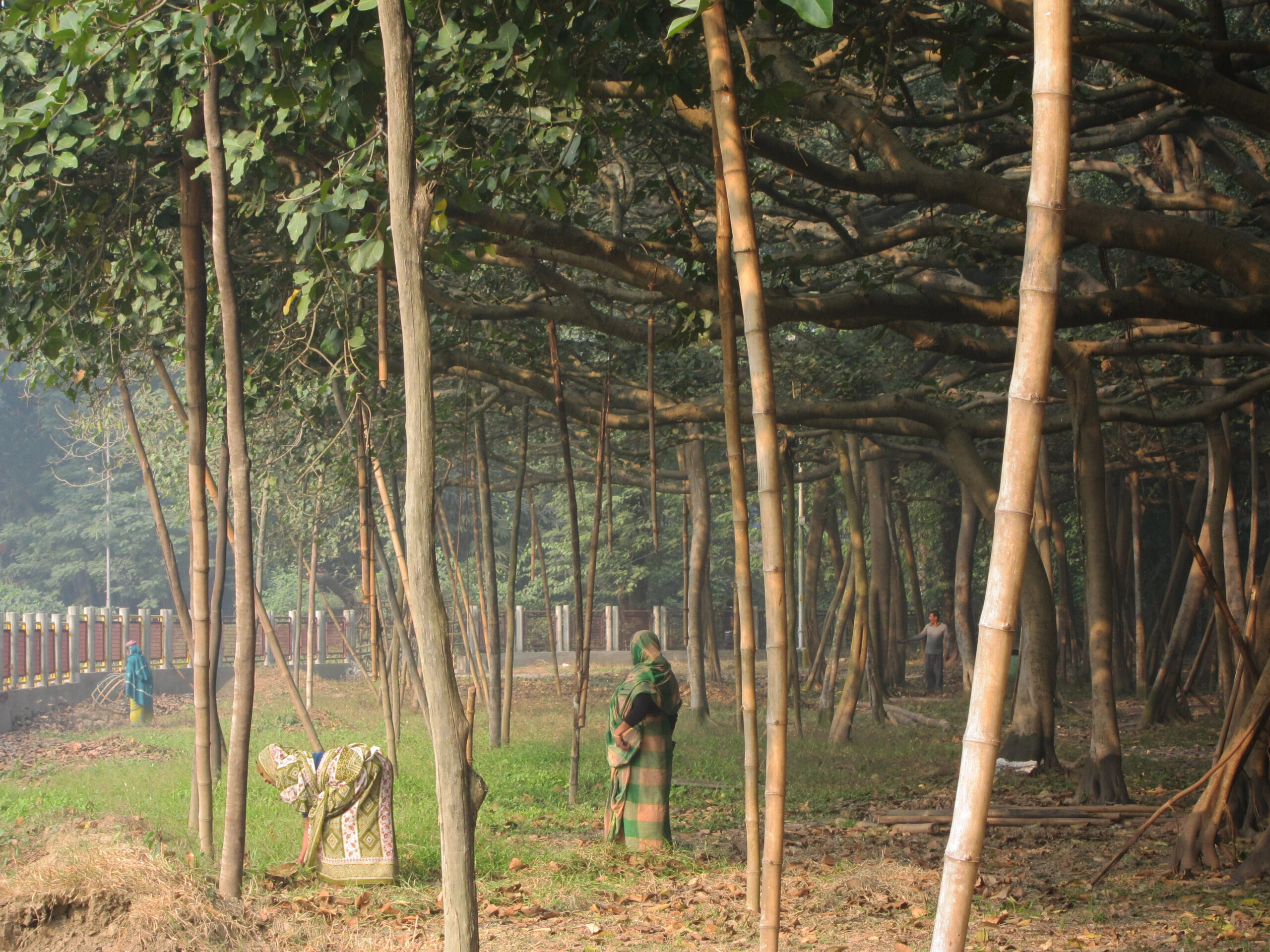1878
One of the places where our paths have crossed is Calcutta, which Marianne visited in 1878, and I visited a number of times from 2016 to 2018. There are echoes of the Bengal countryside of her time; you can still find ‘whole forests of palmyra-palms’ set in the water, and the raised bamboo platforms and cottages on stilts at the edge of swampy ponds covered in green algae.
In the city, Marianne stayed in a huge cosmopolitan hotel, unnamed in her journal, in a suite of great rooms ‘with all sorts of curious creatures running over the floor. Six huge adjutant-birds were sitting on the top of the tall house opposite. I had seen them also on trees as I came along, which did not suit their long toes. They help themselves about with their beaks as old gentlemen help themselves with their walking-sticks.’
Marianne had a wealth of contacts around the world, either through family connections, or from meeting people on her travels. Although she was often critical of the inward-looking nature of colonial society, she seems to have had a good time in Calcutta. ‘Nearly every one was out of Calcutta, and my only friends were Mr. K., the manager of Newman’s (the great bookseller), and his wife, whom I had met in the steamer coming out. I could not have had kinder or more efficient friends. I met some of the most agreeable and best educated people at their house, and seldom have heard better talk.’ I tried to track down Newman’s, but the address in Old Court House Street turned out to be the Great Eastern Hotel, part of which is now under renovation. Neighbouring buildings have also fallen into disrepair, with banyan trees growing from the roof.
Another of Marianne’s friends in Calcutta was Miss S., ‘a young English lady who had undertaken the employment of teaching the wife of a Rajah of high rank, who had himself gone to see Europe. His poor little bride (a mere child) feared he would come back with a perfect contempt for all native ways, and she wished to educate herself and be taught the ways of Europe, so as not to disgust him on his return. Miss S. was a very bright, lively girl, and said it was a most amusing and interesting occupation teaching the poor little Rani, and telling her about the outer world. She even took her out sometimes (well veiled and incog.) to see sights.’
As was often the case, the focus of Marianne’s stay in Calcutta was the botanical garden across the Hooghly River. I made my own pilgrimage early one morning, the streets relatively quiet, the gardens almost empty with mist rising from the ponds. In the now neglected gardens, I could imagine Marianne searching out a quiet corner to set up her easel.
‘The famous botanic gardens are six miles from Calcutta, but the whole drive is full of interest and wonderful vegetation. A German was director of the gardens in Dr. King’s absence, and went heart and soul into my work of hunting up the Sacred Plants. He put me into the hands of a learned baboo who said “it pleased him much that I should take so much trouble about the flowers that Siva loved,” and he told me many things about them. One plant, the “Bah,” a famous cure for dystentery, he said he never passed without bowing to, and always put a leaf in his pocket every morning, then nothing could happen to him,—he must be safe, as Siva loved all who were near these trees. He also told me that when he felt old age coming he should go to Benares and die there, and so be quite sure of going to heaven.
‘The flowers I was in seach of were still out of bloom, so I left Calcutta again the next morning at 7.30.’



